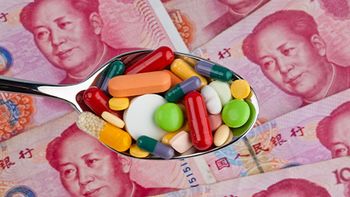
NICE Lite?
Is a more "light-touch" appraisal process the key to getting the UK's NICE to do more with less? Leela Barham reports.
The National Institute for Health and Care Excellence (NICE) is a busy agency. In the financial year 2015/16, it published hundreds of pieces of guidance; including 47 technology appraisals. It’s also going to get busier as it takes on the responsibility for the Cancer Drugs Fund (CDF); including and not limited to just new cancer drugs, but re-looking at those drugs previously funded through the ring-fenced pot of money from July 2016.
The problem with being a busy agency is that it doesn’t necessarily get the resources to match. Since timely access to cost-effective medicines is a key focus across many stakeholders (really, it’s only managers balancing books who will want that to be slow), NICE is under pressure to be timely in giving it’s view on new medicines too. It’s not currently meeting its targets on the speed of single and multiple technology appraisals. So what’s NICE to do?
There seems to be two main options being put forward to help NICE deal with the conundrum of trying to keep up the pace whilst expected to do more; getting more money in to boost resources by
The
ATA is envisioned to be a slim-line version of the Single Technology Appraisal (STA) approach. It would have shorter timelines for the company submission and for the independent academic Evidence Review Group (ERG); saving perhaps a couple of weeks of time. It would also change the methods, focusing on clinical effectiveness, and reducing “unnecessary economic analysis”. The option for stakeholders to appeal would remain. It would also still be supported by a legal requirement to fund, if NICE recommends use.
NICE see some risks with the approach; that perhaps the evidence collected won’t quite be enough to fully inform decision-making or that companies won’t necessarily like the approach, especially if it’s perceived as advantages companies with second or third-in-class drugs over innovative ones. More realistically it’ll be the fact that NICE will have the final say so on the type of appraisal that may irritate companies; they will presumably have a view of what they’d prefer. And if they’re likely to be paying, who can blame them.
One thing companies will need to bear in mind is that unlike STAs, they won’t be able to table a Patient Access Scheme (PAS) part way through an ATA. PAS have proven to be an important way to secure a NICE, yes -primarily through a confidential price discount - and many companies have tabled them after NICE has first said a provisional no.
It also looks like there would be no implementation tools to support ATAs either. Given that implementation of NICE guidance is really where the value of them should be delivered (if NICE says yes, and no-one uses a drug then patients lose out, companies lose out, and taxpayers have paid for expensive but ultimately useless guidance), could this be a false economy? Clinical experts, patient experts and non-company consultees and commentators will also not normally be invited to take part in Committee discussion. This is something that may cause some concern: although typically the concern will be if NICE is perceived as coming to the wrong answer.
The net impact of the ATA approach could be significant resource savings; perhaps as 50% saving in terms of NICE Committee time. The saving for companies is hard to know, especially as they already invest in economic modelling at the global level that is then used and adapted for countries. However, it could save the tooing and froing between companies and the ERGs.
The NICE proposals will be subject to consultation, so changes might yet be made to the proposals.
Leela Barham is an independent health economist and policy expert. You access her website
Newsletter
Lead with insight with the Pharmaceutical Executive newsletter, featuring strategic analysis, leadership trends, and market intelligence for biopharma decision-makers.





